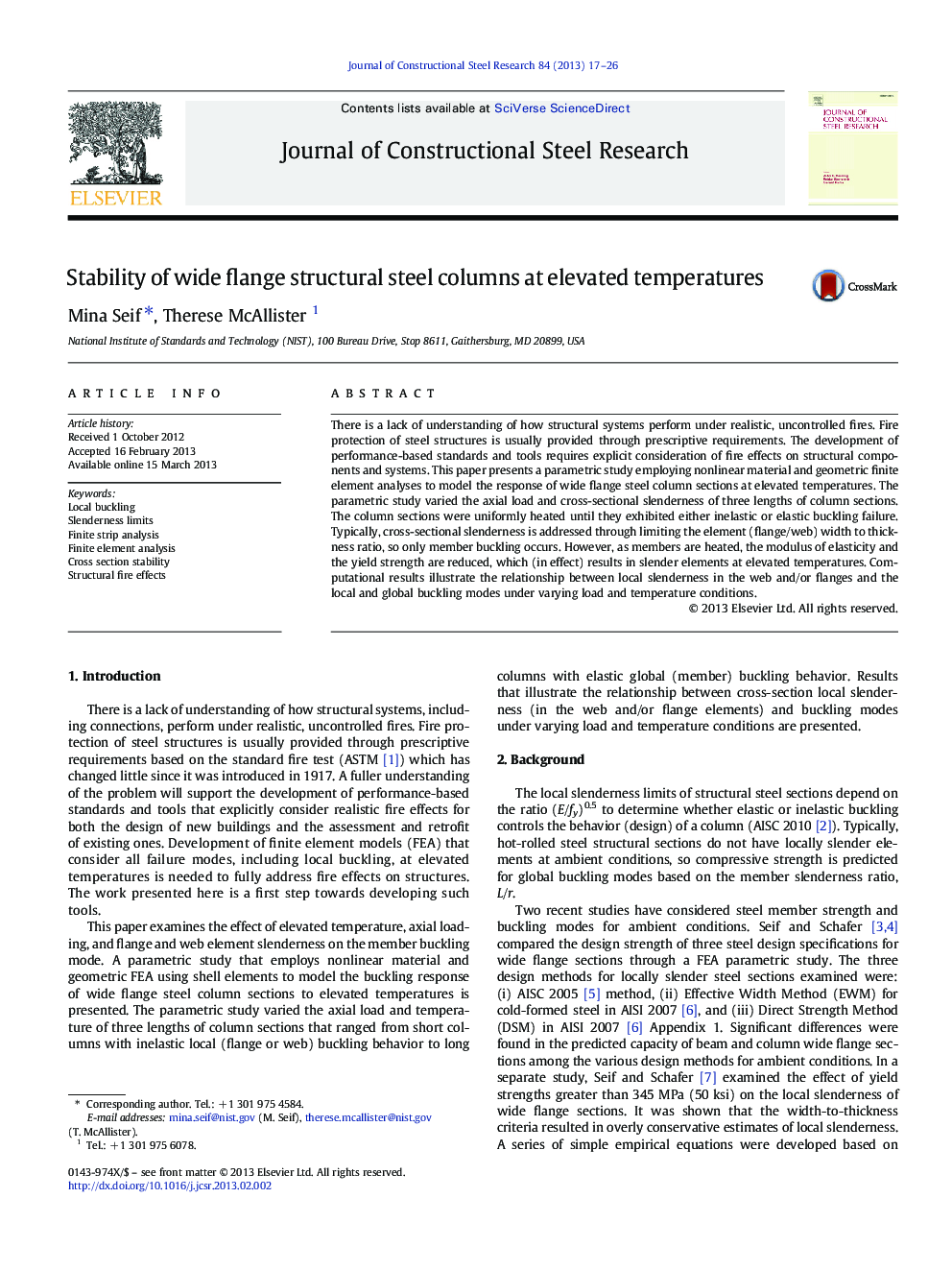| Article ID | Journal | Published Year | Pages | File Type |
|---|---|---|---|---|
| 284971 | Journal of Constructional Steel Research | 2013 | 10 Pages |
There is a lack of understanding of how structural systems perform under realistic, uncontrolled fires. Fire protection of steel structures is usually provided through prescriptive requirements. The development of performance-based standards and tools requires explicit consideration of fire effects on structural components and systems. This paper presents a parametric study employing nonlinear material and geometric finite element analyses to model the response of wide flange steel column sections at elevated temperatures. The parametric study varied the axial load and cross-sectional slenderness of three lengths of column sections. The column sections were uniformly heated until they exhibited either inelastic or elastic buckling failure. Typically, cross-sectional slenderness is addressed through limiting the element (flange/web) width to thickness ratio, so only member buckling occurs. However, as members are heated, the modulus of elasticity and the yield strength are reduced, which (in effect) results in slender elements at elevated temperatures. Computational results illustrate the relationship between local slenderness in the web and/or flanges and the local and global buckling modes under varying load and temperature conditions.
► Buckling of wide flange steel column sections at elevated temperatures is studied. ► Effect of elevated temperature, axial loading, and element slenderness is examined. ► Parametric study that employs nonlinear material and geometric FEA is conducted. ► Relationship between local slenderness and buckling modes is illustrated.
